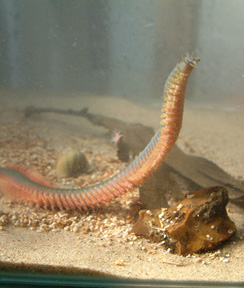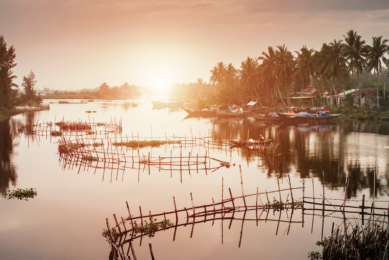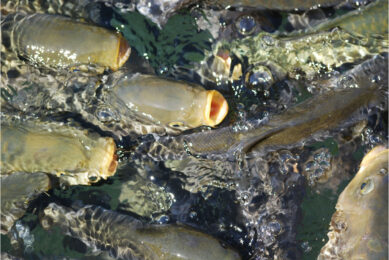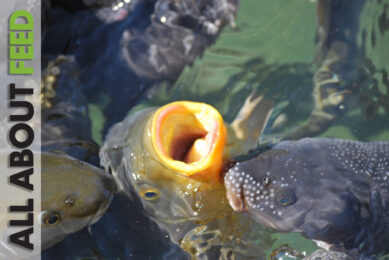Ragworms show promise as substitute for fish meal

As the pressure on fish stocks is continuing, companies become more innovative to find alternative ingredients to feed our fish. One of these innovators is Topsy Baits, a Dutch company specialised in turning ragworms into a valuable fish diet.
Aquaculture is the fastest growing food producing industry in the world. With an increase of nearly 9% annually in the last decade it is now worth billions of dollars globally. Fish meal and fish oil are important components in the feeds for many of the farm-raised fish species as they supply essential amino acids and fatty acids. However, the relatively high cost of fish meal and fish oil – and growing pressure on the wild fisheries that supply the fish meal and fish oil – are adding up to make alternative feeds one of the top issues facing the aquaculture industry today.
An increasing number of studies are being conducted to find suitable alternatives to incorporate in the fish diets. Topsy Baits in the Netherlands are founders of one of these alternatives: ragworms!
More than bait
Topsy Baits started its research into the farming of ragworms (Nereis virens) in 1983 and two years later, the company was the first to come to the market with cultured ragworms. Initially, the produced ragworms were only used for the angling industry but now the worms may have found another destination as well: fish feed. “The expansion of the use of ragworms started when a client on Aruba showed interest in using the ragworms as shrimp feed” explains Toon Bastiaanse, farm manager of Topsy Baits. Wild worms from the US were already used as shrimp feed (broodstock feed) and resulted in good egg production of the shrimps. Soon after, the company started a partnership with a ragworm producer in Wales to become more specialised in producing aqua feed based on ragworms.
Worm cultivation
For the culture of our worms natural (not heated and treated) seawater is used. This allows the worms to undergo all seasons and grow under natural conditions. The ragworms are fed twice a day. “We try to mimic the natural habitat of the worms to allow the worms to be of similar quality as their wild fellows. Since the worms are farmed in shallow outside ponds special equipment had to be designed. For recirculation, Topsy designed and built a specially adapted brushpump. The aerators are designed to work in the shallow ponds and are highly efficient. The automated harvesting machines work their way through the ponds, harvesting the worms in a gentle way in order to make sure that the quality does not suffer. The packaging machine (also designed on farm) allows sending the worms alive all over the world. The farm (17 hectares) has a current size of 96 growout ponds with an annual production of 100 tonnes.
Replacement of fishmeal
At the moment, the majority of the ragworms from Topsy are still used for the angling industry. However, at the production facility in Wales, an increasing part of worms are being processed to fish feed. “Fish meal can now be fully replaced by adding the ragworms. We are also experimenting by mixing the ragworms with different ingredients such as seaweed and soy, to find a good alternative to fish oil” explains Bastiaanse. At the moment, four trout farms in Wales and a salmon farm are using the fishmeal-free feed from Wales. The fish is healthier, meat structure and taste is better. Retailers are therefore showing great interest and want their farmed fish to be fed this diet. In the future, the company wants to increase the number of field trials with ragworms, in more fish species. “Replacing fish meal completely is a huge step forward and the next challenge lies in replacing the fish oil as well” concluded Bastiaanse.
More info: www.topsybaits.nl and www.dragonfeeds.com
A ragworm is a polychaete worm of the genus Nereis or the family Nereidae. Ragworms are often used as fishing bait, especially the North Atlantic species Nereis diversicolor. Ragworms are true worms (Annelidae) and are segmented like all true worms. In the US they are often called sandworms or clam worms. Ragworms use tiny structures along the sides of their bodies to crawl around beaches and mudflats. These tiny structures along the top of their bodies are actually their gills. At the front of a ragworm’s head are curved fangs which are part of its mouth. A ragworm uses these to capture and tear apart their crustacean prey. According to Bastiaanse all they do is “lie in the sand and eat”. |











